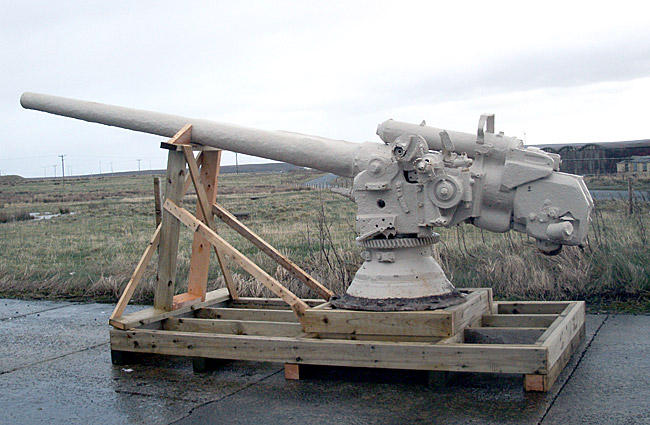From Scapa Flow to Portsmouth – WW1 guns to go on display for Battle of Jutland commemoration

Guns that saw action at Jutland are travelling from Orkney to be shown as part of the main UK exhibition on the key naval battle of the First World War.
The large deck gun from the German destroyer B98, and a smaller deck gun from HMS Opal, are usually on display at Orkney Islands Council’s Scapa Flow Visitor Centre and Museum at Lyness.
Jutland brought together the two most powerful naval fleets of the time in the pivotal maritime engagement of the war, with 6,000 British and 2,500 German personnel lost.
The guns importance as direct links to the battle led to the loan request from the National Museum of the Royal Navy (NMRN) in Portsmouth.
As part of the loan arrangement, the NMRN will carry out extensive conservation work on the guns.
Councillor Harvey Johnston, chairman of the OIC’s education, leisure and housing committee, said: “Orkney is hosting the national commemoration of Jutland, with a service of remembrance at St Magnus Cathedral followed by a time for reflection at the Royal Naval Cemetery at Lyness. There will also be a major WW1 exhibition at the Orkney Museum in Kirkwall and revamped displays at the Scapa Flow Visitor Centre and Museum.
“Many thousands of sailors perished at Jutland and it is fitting that the commemoration events in Orkney will draw to a close among the graves of some of the fallen at Lyness.
“We also felt it was appropriate to loan exhibits from the Scapa Flow Visitor Centre to what will be the UK’s main exhibition telling the story of the battle itself.
“The guns from our collection were fired in anger at Jutland and are of international importance – as is clearly demonstrated by the request for them to be sent on loan for the exhibition in Portsmouth.
“It is particularly pleasing that because of the conservation work that will be carried out, they will return to us in even better condition than when they left.”
During WW1, the Royal Navy’s Grand Fleet was based at Scapa Flow. The Battle of Jutland was fought between the Royal Navy’s Grand Fleet and the German High Seas Fleet on May 31– June 1, 1916.
The German destroyer B98 was the leader of the 2nd Flotilla of the German High Seas Fleet at Jutland. The ship later went aground in the Bay of Lopness in Sanday, where parts of B98 can still be seen – the base plates of the hull survive, along with boilers and turbine casings.
HMS Opal took part in the Battle of Jutland as part of the 12th Flotilla.
In January 1918, while on a Dark Night Patrol in severe weather and with poor visibility, an unfortunate navigational error caused HMS Opal and her sister ship HMS Narborough to sail straight into the cliffs at Hesta Rock on South Ronaldsay. Both ships were wrecked with 188 casualties and only one survivor.

